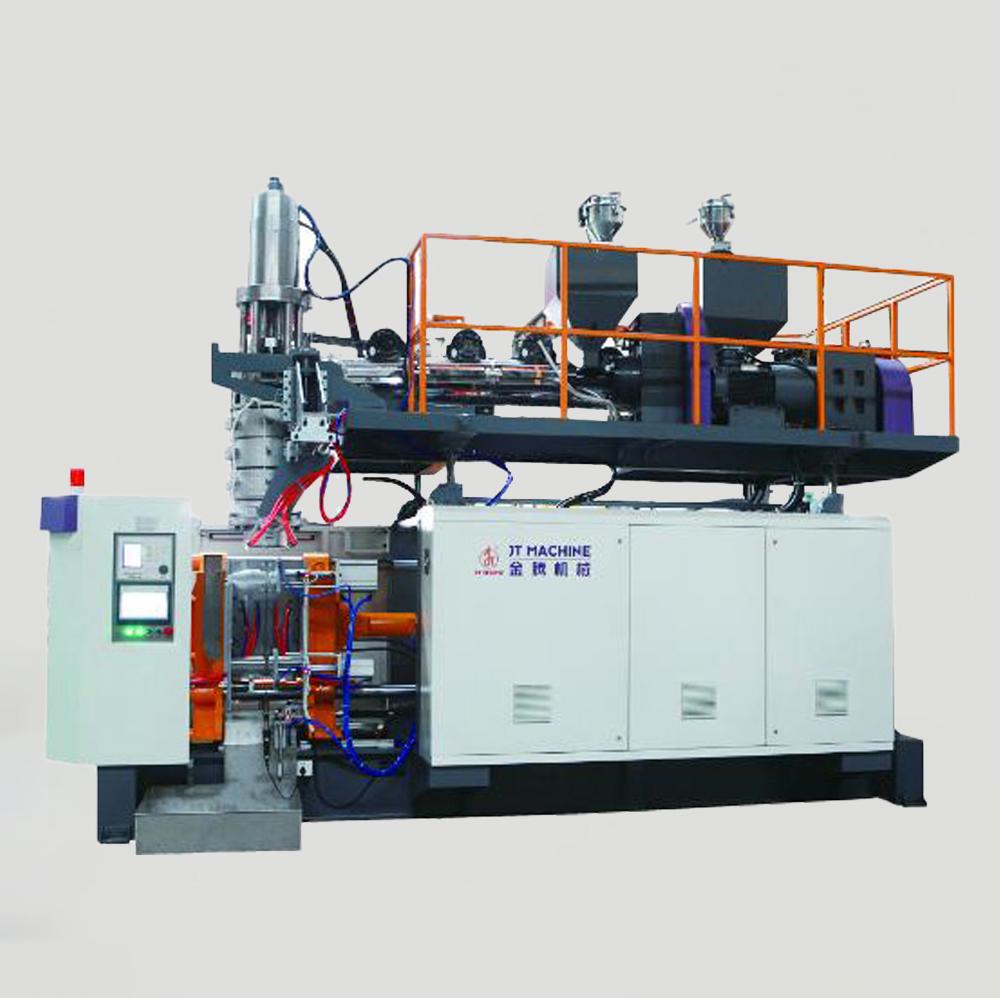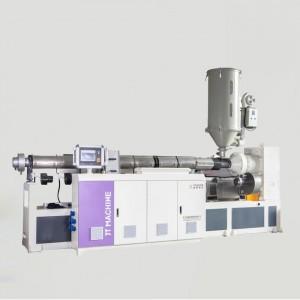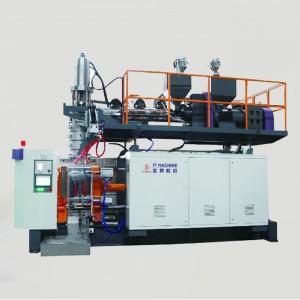
A Bottle blowing machine uses automation and real-time controls to deliver uniform bottles in bulk production. Modern systems, including those from Blowing Screw Barrel Factory, feature servo motors and robust clamps for higher consistency. Features found in a plastic blowing machine or a PE blowing bottle machine help minimize energy use while supporting stable, high-quality output.
Key Factors for Consistent Quality with Bottle Blowing Machines

Advanced Machine Technology and Automation
Modern bottle blowing machines rely on advanced technology and automation to deliver consistent results. Machines like the JT series use intelligent control systems and high-precision sensors to monitor every stage of production. These systems regulate heating, stretching, and clamping with great accuracy. Operators can adjust parameters quickly using user-friendly touch screens, such as the Siemens IE V3 1000 color interface. Automation features, including robotic product removal and automatic lubrication, reduce human error and improve safety.
Automated lines can reach speeds of 60 to 120 bottles per minute. They also lower labor costs and increase throughput. Companies that use servo motors and programmable logic controllers (PLCs) see higher efficiency and less waste. Energy-efficient designs, such as variable frequency motors and servo-driven hydraulics, help save up to 30% in energy use while maintaining high production speeds.
| Company/Method | Energy Reduction | Production Speed Increase (bottles/min) | Production Capacity (bottles/hour) |
|---|---|---|---|
| North American Beverage Company | 30% | 20% | N/A |
| Blow Blow Method | N/A | 200 | N/A |
| Beermaster (Moldova) with APF-Max | N/A | N/A | 8,000 (for 500 ml bottles) |
Raw Material Handling and Preparation
Consistent quality starts with the right raw materials and careful preparation. Manufacturers select materials like PE, PP, and K for their specific properties, such as heat resistance and durability. Proper drying of plastics, especially PET, prevents defects and ensures stable production. Automated loading and mixing equipment keep material composition uniform, which leads to bottles with even size and weight.
- Improved raw materials meet safety and environmental standards.
- Multi-layer and multi-head co-extrusion technologies allow better control over bottle structure.
- Automated auxiliary equipment increases efficiency and keeps product appearance consistent.
- Careful handling of recycled materials helps maintain performance and supports sustainability.
A systematic approach covers the entire process, from material handling to machine processing and mold matching. This approach boosts operational efficiency and product competitiveness.
Temperature, Pressure, and Process Control
Precise control of temperature and pressure is vital for stable bottle production. The JT series bottle blowing machine maintains temperature within a narrow range, often ±0.5°C, and pressure within ±5 psi. These tight controls prevent defects and ensure each bottle meets quality standards. Operators use statistical process control tools, such as control charts, to monitor these parameters and detect unusual variations.
Manufacturers use analysis tools like ANOVA to identify which factors most affect quality. By focusing on these key variables, they can fine-tune settings and reduce inconsistencies. Regulatory guidelines require robust statistical analysis to validate process parameters and maintain stable production.
- Stable production depends on distinguishing between normal and unusual variations.
- Control charts track process behavior over time.
- Keeping temperature and pressure within set limits ensures consistent quality.
Mold Design and Maintenance
Mold design and maintenance play a crucial role in bottle uniformity. Precise mold cavity preparation and regular cleaning prevent defects and keep product quality high. The JT series uses a ductile iron formwork system and linear guides for stable, strong clamping. Proactive maintenance, supported by computerized systems, extends mold life and improves efficiency.
- Standardized maintenance schedules ensure consistent mold performance.
- Preventive care stops mold growth and keeps bottles pure and uniform.
- Centralized spare parts management reduces downtime and supports continuous production.
Companies that follow strict mold care procedures see better bottle uniformity and fewer production interruptions.
Overcoming Quality Challenges in Bottle Blowing Machine Production

Common Defects and Their Causes
Manufacturers often face several types of defects during bottle production. These defects can include uneven wall thickness, air bubbles, poor bottle shape, and incomplete molding. Uneven wall thickness usually results from improper temperature or pressure control. Air bubbles may appear if the raw material contains moisture or if the plasticizing process is not thorough. Poor bottle shape often links to incorrect mold alignment or insufficient clamping force. Incomplete molding can happen when the blowing pressure is too low or the mold is not clean.
Operators must identify the root causes of these defects to maintain high product quality. They should check the raw material quality, monitor machine parameters, and inspect molds regularly. Quick detection and correction of these issues help reduce waste and improve efficiency.
Tip: Regularly inspect the mold and machine settings to catch defects early and keep production running smoothly.
Machine Settings and Process Adjustments
Adjusting machine settings plays a vital role in overcoming quality challenges. Operators can fine-tune temperature, pressure, and timing to match the specific requirements of each production run. Modern systems, such as those found in the JT series, allow for real-time monitoring and quick parameter changes through advanced touch screens and smart sensors.
- Regular review and adjustment of quality measurements and production parameters help identify improvement areas and enhance quality control outcomes.
- Industry 4.0 technologies enable real-time monitoring and adjustment of machine settings through smart sensors, digital twins, and advanced analytics, directly linking machine modifications to quality improvements.
- Automated inspection systems and robotics improve precision and consistency in quality checks, reducing defects and rework.
- AI and machine learning analyze production data to predict quality issues and optimize processes, supporting data-driven machine setting modifications.
- Continuous improvement strategies such as process audits and performance reviews ensure ongoing optimization of machine parameters to maintain product quality.
- Key performance indicators (KPIs) like defect rates, first-pass yield, and scrap rates provide measurable values that reflect the impact of machine setting changes on quality outcomes.
Operators who use these strategies can quickly respond to changes in production conditions. They can reduce the number of defective bottles and improve overall efficiency. The bottle blowing machine becomes more reliable and produces higher-quality products.
Essential Features for Quality Control
Quality control depends on several essential features built into modern bottle production systems. Automated inspection tools, precise clamping mechanisms, and advanced monitoring systems all help maintain high standards. The JT series, for example, uses a ductile iron formwork system and linear guides to ensure strong and stable clamping. Automatic lubrication and robotic product removal further support consistent results.
Key performance indicators help manufacturers track and improve quality. The table below shows some important KPIs used in bottle production:
| KPI Name | Description/Formula | Example/Quantitative Data |
|---|---|---|
| Defect Rate | Percentage of defective products in production | 5% defect rate reported for Supplier A |
| On-Time Delivery | Percentage of orders delivered on or before the scheduled date | 98% on-time delivery rate |
| Order Fill Rate | (Number of Orders Fulfilled in Full / Total Number of Orders) × 100% | 95% order fill rate |
| Supplier Performance Scorecard | Metrics including on-time delivery, quality compliance, and responsiveness | Supplier A: 98% on-time but 5% defect rate |
| Inventory Turnover Ratio | Cost of Goods Sold / Average Inventory Value | High ratio indicates efficient inventory management |
| Transportation Cost per Unit Shipped | Total Transportation Costs / Total Units Shipped | Alerts on cost increases due to longer routes |
These KPIs allow teams to measure progress and identify areas for improvement. By focusing on these metrics, manufacturers can ensure that every bottle meets strict quality standards and customer expectations.
Best Practices for Operating and Maintaining Bottle Blowing Machines
Regular Inspection and Preventive Maintenance
Routine inspection and preventive maintenance keep bottle blowing machines running smoothly. Operators check for wear, clean parts, and lubricate moving components. These steps help prevent unexpected breakdowns. Many factories use predictive maintenance programs that monitor equipment and analyze data. This approach forecasts failures before they happen. As a result, companies reduce unplanned downtime and lower maintenance costs.
A case study in the industry showed that using reliability-centered maintenance and failure analysis improved machine effectiveness. Teams identified critical parts and focused on their upkeep. Over six months, real-time data revealed better reliability and fewer breakdowns. Operators who performed daily tasks like cleaning and tightening saw a drop in machine failures. Planned maintenance before problems occur prevents major issues and keeps production steady.
Tip: Empower operators to handle minor maintenance. This practice increases machine reliability and reduces emergency repairs.
Parameter Optimization and Staff Training
Optimizing machine parameters ensures each bottle meets quality standards. Operators adjust temperature, pressure, and timing for the best results. Regular reviews of these settings help maintain consistent output. Training staff on the latest procedures and technologies is also important. Well-trained teams spot issues early and make quick corrections.
Many companies use data-driven models to schedule maintenance and optimize settings. This strategy extends machine life and improves reliability. Staff who understand the bottle blowing machine’s controls and maintenance needs contribute to higher productivity and fewer errors.
Regular training and parameter checks help teams produce high-quality bottles every time.
Modern machines like the JT series help manufacturers achieve consistent quality in bulk bottle production. Advanced controls, automation, and reliable maintenance lower costs and boost output. The table below shows key economic benefits for companies that invest in this technology:
| Aspect | Economic Benefit |
|---|---|
| Energy Efficiency | Up to 30% reduction in electricity costs |
| Versatility | Fewer machines needed, saving space and money |
| Maintenance Reliability | More uptime, higher profits |
| Automatic Lubrication | Lower maintenance costs, fewer interruptions |
| Operator Training | Faster production, fewer errors, better machine use |
| Waste Reduction | Less material waste, better product consistency |
| Production Speed | Higher throughput, faster response to market needs |
FAQ
What materials can the JT series bottle blowing machine process?
The JT series handles PE, PP, and K materials. These plastics offer strength and flexibility for bottles ranging from 20 to 50 liters.
How does automation improve bottle quality?
Automation reduces human error. The machine uses sensors and intelligent controls to monitor each step. This ensures every bottle meets strict quality standards.
What maintenance steps keep the JT series running smoothly?
Operators should follow a regular inspection schedule. They clean, lubricate, and check key parts. This routine prevents breakdowns and extends machine life.
Post time: Jun-24-2025
